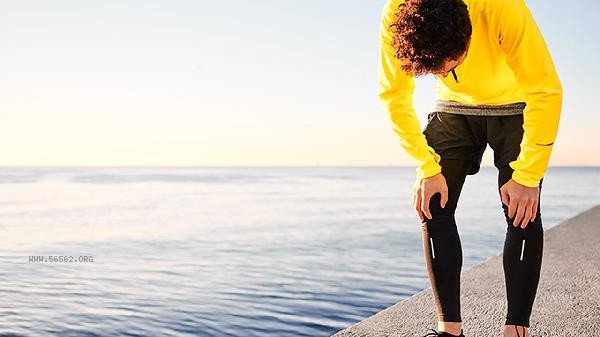Running thigh strain can be promoted through rest braking, alternating cold and hot compresses, medication relief, rehabilitation training, physical therapy, and other methods to facilitate recovery. Thigh strain is usually caused by insufficient warm-up before exercise, excessive muscle fatigue, incorrect movement posture, external impact, and old injuries that have not healed.

1. Rest brake
Stop running immediately during the acute phase to avoid further stress on the affected thigh. Using elastic bandages to apply pressure to the injured area and raise the lower limb above the level of the heart can help reduce swelling. Severe cases require walking with crutches to prevent secondary injuries. The braking time depends on the degree of strain, with mild strains requiring 3-5 days of rest and moderate to severe strains requiring 1-2 weeks.
2. Alternating cold and hot compress
Within 48 hours after pulling, ice compress every 2 hours for 15 minutes to contract blood vessels and reduce internal bleeding. After 48 hours, switch to hot compress to promote blood circulation, with the temperature controlled at around 40 ℃, 3-4 times a day. Pay attention to using a towel to separate the skin when applying ice to avoid frostbite. The combination of hot compress and gentle massage has a better effect, but it is important to avoid kneading during the swelling period.
3. When the pain is obvious, nonsteroidal anti-inflammatory drugs such as diclofenac sodium sustained-release tablets and loxoprofen sodium tablets can be used according to the doctor's advice. Topically apply flurbiprofen gel plaster or compound Nanxing pain relieving cream. It should be forbidden for people with drug allergy. Individuals with severe muscle spasms can take methylprednisolone hydrochloride tablets for a short period of time, but should be cautious of side effects such as drowsiness. Do not increase the dosage or mix multiple painkillers on your own.
4. Rehabilitation training

Start static stretching after swelling subsides, such as lying down and hooking the toes for 10 seconds. Gradually increase resistance training and use elastic bands to perform hip abduction movements. During the recovery period, low impact exercises such as swimming and cycling can be performed, and sufficient warm-up is necessary before and after exercise. The training intensity should not cause pain, and the weekly increase in load should not exceed 10%.
5. Physical therapy
Ultrasound therapy can promote soft tissue repair, lasting 10-15 minutes each time. Shock wave therapy is suitable for chronic injuries and requires repeated treatment every 5-7 days. Intermediate frequency electrical stimulation can alleviate muscle adhesion, and the effect is more significant when combined with infrared irradiation. Regular assessment of recovery during treatment, and immediate cessation of any abnormal pain. During the recovery period, maintain a high protein diet, supplement with appropriate amounts of vitamin C and calcium, and avoid spicy and stimulating foods. During sleep, place a pillow under the knee to maintain muscle relaxation. Before complete recovery, explosive exercises such as jumping and variable speed running are prohibited. It is recommended to wear sports protective equipment to prevent recurrence and strengthen quadriceps eccentric training. Before exercise, do a 15 minute dynamic warm-up, and pay attention to controlling the stride and landing posture during running. If there is no relief or subcutaneous congestion spreading within two weeks, timely follow-up MRI should be performed to rule out muscle rupture.







Comments (0)
Leave a Comment
No comments yet
Be the first to share your thoughts!